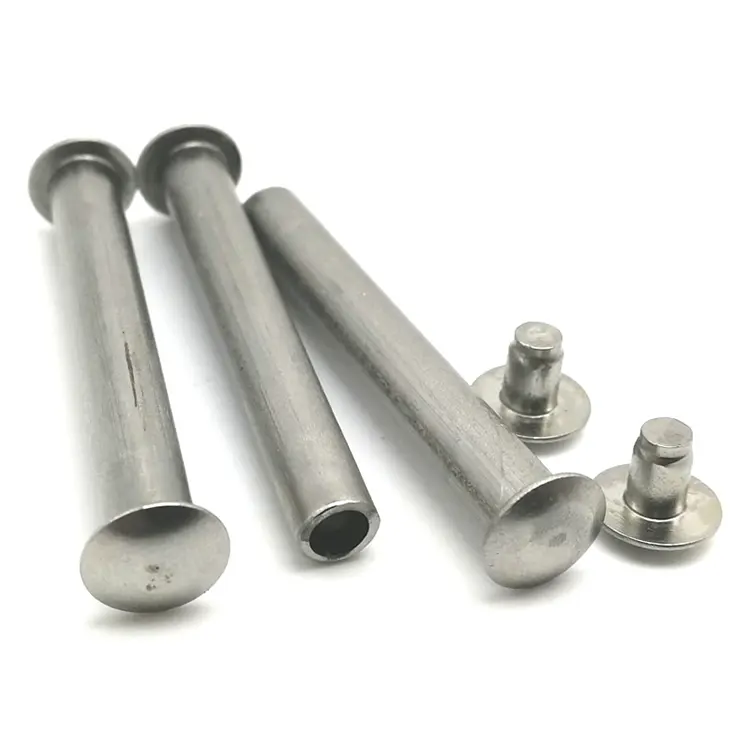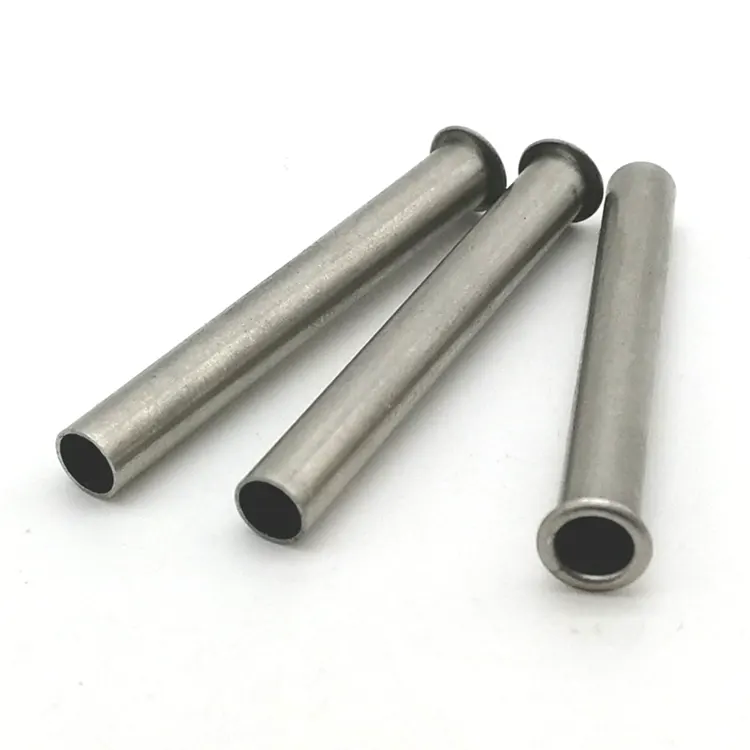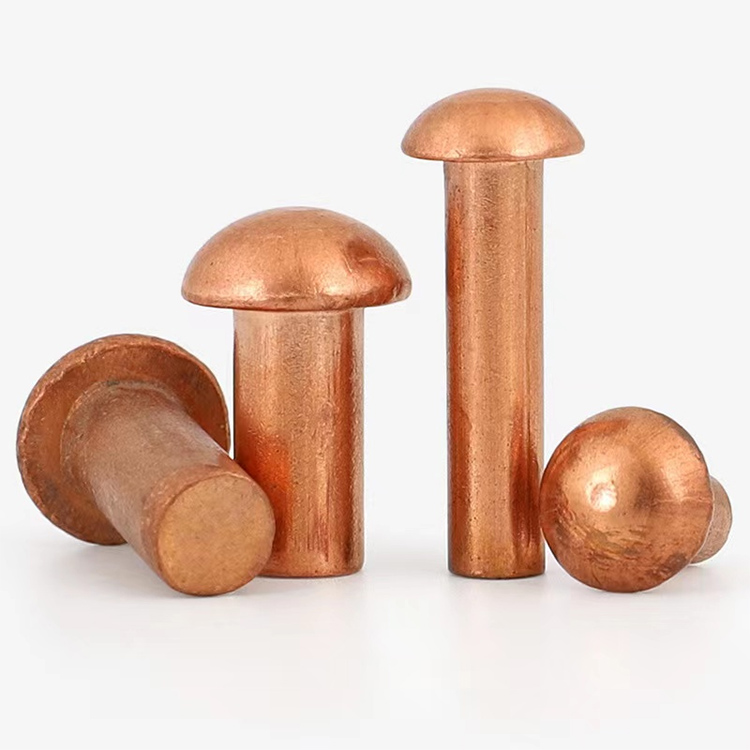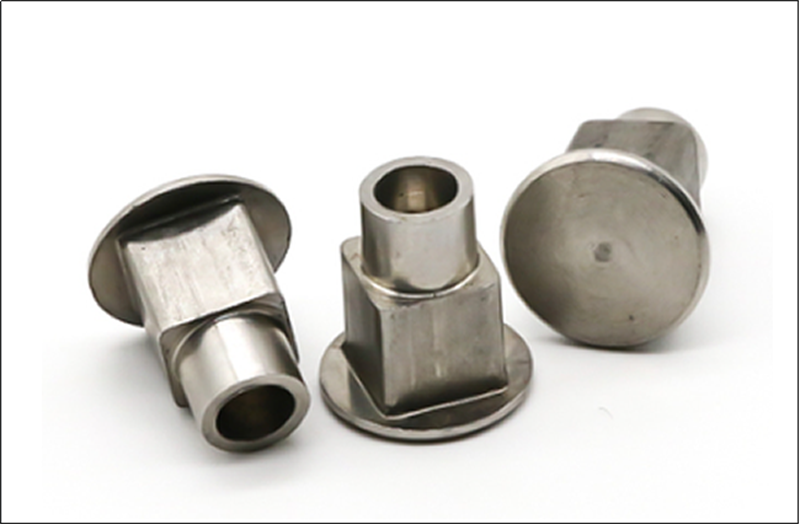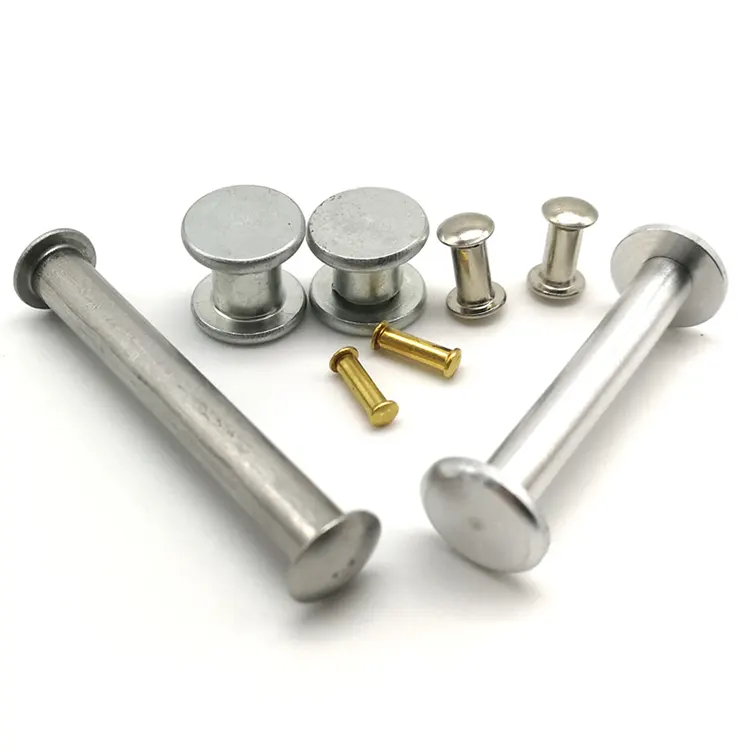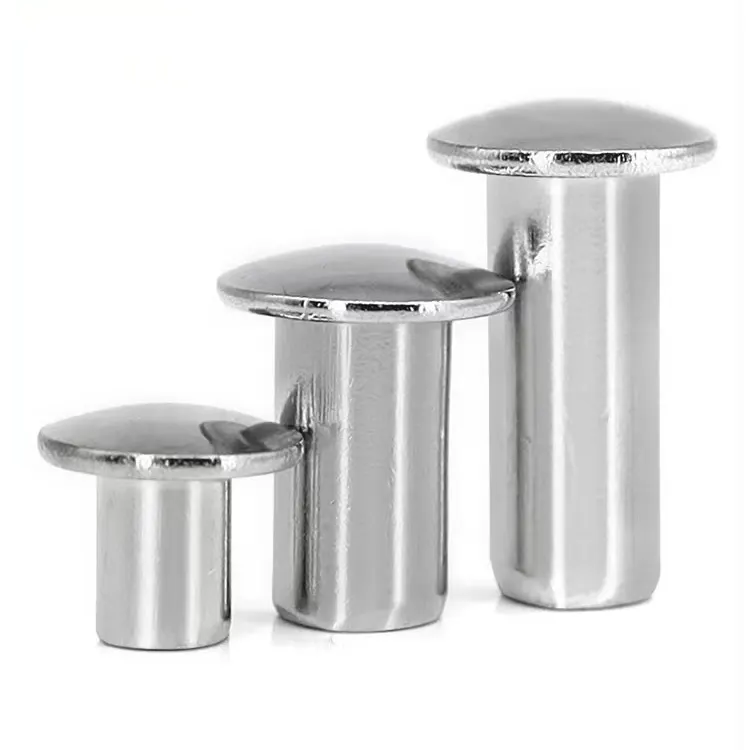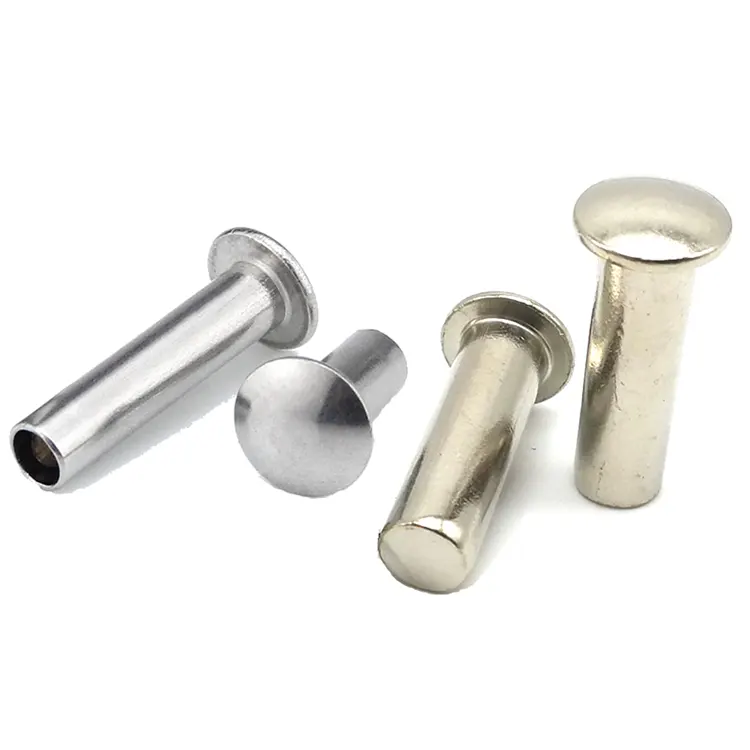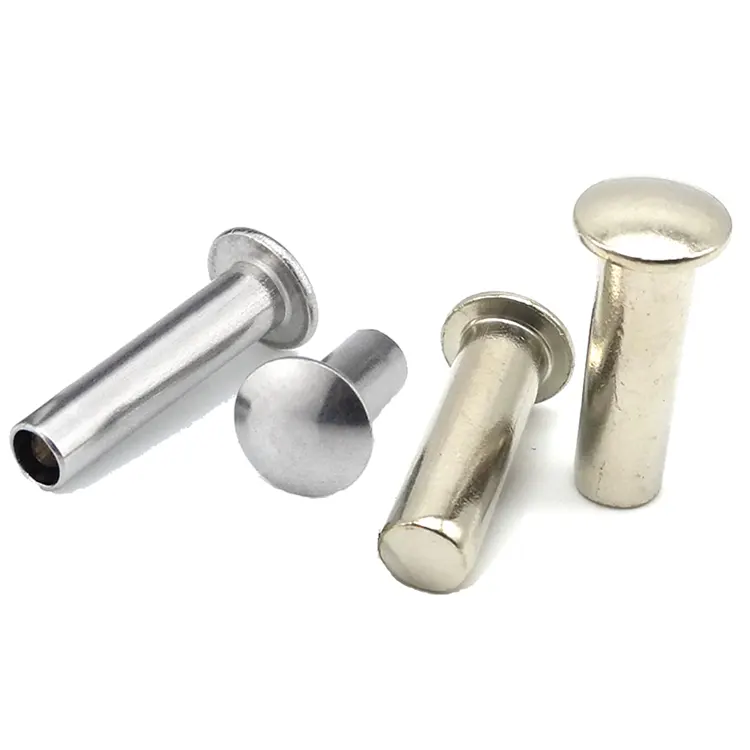Specjalne nity
One of Chinese manufacturer of Special Rivets, offering excellent quality at a competitive price, is Notin. Feel free to get in touch.
In the field of mechanical manufacturing and assembly, rivets are a common fastener used to professionally connect two or more parts. According to the degree of standardization, rivets can be divided into two categories: standard rivets and non-standard rivets. The size, shape and material of standard rivets are uniformly specified, while non-standard rivets are customized according to specific needs. The following will introduce the characteristics and applications of non-standard rivets from multiple aspects.
What are non-standard rivets?
Non-standard rivets are also called special rivets. They refer to rivets that do not meet national standards or industry general standards. Their size, material, structure and other parameters are designed and manufactured according to the specific needs of customers. Due to the different connection requirements of different industries and equipment, standard rivets may not meet the requirements of certain special scenarios, so non-standard rivets came into being.
What are the characteristics of special rivets?
(1) Strong customization: Non-standard rivets can be personalized according to factors such as the use environment, stress conditions, and assembly methods to ensure that they perform well in actual applications.
(2) Diverse materials: In addition to common carbon steel and stainless steel, non-standard rivets can also be made of special materials such as aluminum alloy, copper alloy, titanium alloy, etc. to meet different corrosion resistance, strength and weight requirements.
(3) Flexible structure: The structure of non-standard rivets can be adjusted according to needs, such as head shape, stem diameter, length, etc., and can even be designed to be hollow, semi-hollow or other special shapes.
- View as
Nity uniwersalne z łbem
Uniwersalny nit z łbem jest rodzajem mechanicznego elementu łączącego w systemie klasyfikacji nitów. Głowica ma płaską konstrukcję w kształcie łuku i nadaje się do łączenia materiałów takich jak cienkie blachy, skóra, płótno i drewno. Ten typ nitu jest mocowany za pomocą procesów nitowania na zimno lub na gorąco, a jego zalety to łatwy montaż i opłacalność w nieuszczelnionych środowiskach przenoszących ciśnienie. W porównaniu z podobnymi produktami, takimi jak nity stożkowe, nity z łbem uniwersalnym są bardziej odpowiednie do nitowania cienkich blach lub materiałów niemetalowych, takich jak skóra, płótno i drewno, ze względu na ich wystającą półkulistą konstrukcję łba.
Czytaj więcejWyślij zapytanieNity dwuczęściowe
Nity dwuczęściowe składają się zazwyczaj z dwóch części: nitu żeńskiego i nitu męskiego. Nit żeński ma wewnętrzny otwór na jednym końcu i stały koniec na drugim. Nit męski, jak bryłanit stopniowy, pasuje do wewnętrznego otworu nitu żeńskiego. Aby użyć, najpierw przymocuj nit żeński do przedmiotu, następnie włóż nit męski do nitu żeńskiego i wbij go na miejsce, łącząc w ten sposób dwa przedmioty. Taka konstrukcja upraszcza instalację, zapewniając jednocześnie niezawodną siłę połączenia. Nuote Metals ma 10-letnie doświadczenie w pracy w tego rodzaju dwuczęściowych nitach. Zapraszamy do przesłania nam swojego rysunku.
Czytaj więcejWyślij zapytanieNity z łbem kratownicowym
Nuote Metals zajmuje się produkcją i sprzedażą nitów z łbem kratownicowym. Nasza siedziba znajduje się w Dongguan w Chinach i posiadamy ponad 40 maszyn do spęczania na zimno, które są w stanie wyprodukować szeroką gamę nitów o różnych specyfikacjach i typach. Oferujemy również nity na wymiar. Nity z łbem kratownicowym są powszechnym elementem nitowanym, składającym się z trzpienia, łba i ogona. Charakteryzują się dużą, płaską główką oraz wydrążonym lub pełnym ogonem, zapewniając doskonałe właściwości uszczelniające i hydroizolacyjne.
Czytaj więcejWyślij zapytanieNity stalowe z łbem okrągłym
Nuote Metals produkuje i sprzedaje stalowe nity z łbem okrągłym w różnych wykończeniach, w tym cynkowanie, niklowanie i platerowanie Dacromet. Nity z łbem okrągłym mają półkolisty kształt łba, zapewniający doskonałą wytrzymałość na rozciąganie i ścinanie, dzięki czemu wytrzymują duże obciążenia. Okrągły łeb umożliwia lepsze dopasowanie nitu do elementu łączącego podczas łączenia, poprawiając stabilność połączenia i uszczelnienie.
Czytaj więcejWyślij zapytanieNity stalowe
Nity ze stali węglowej są powszechnym łącznikiem mechanicznym stosowanym w szerokiej gamie produktów przemysłowych i codziennego użytku. Ich podstawową funkcją jest bezpieczne połączenie ze sobą dwóch lub więcej elementów, tworząc stabilną konstrukcję. Nity ze stali węglowej są popularne ze względu na ich wytrzymałość, trwałość i opłacalność. Nuote Metals produkuje nity ze stali węglowej od ponad dziesięciu lat. Z siedzibą w Dongguan w Chinach, znanej jako „Fabryka Świata”, zapraszamy do odwiedzenia nas gości z całego świata.
Czytaj więcejWyślij zapytanieNity stalowe z łbem płaskim
Nity stalowe z łbem stożkowym są powszechnym łącznikiem przemysłowym stosowanym w szerokim zakresie zastosowań, w tym w motoryzacji, lotnictwie i budownictwie. Nuote Metals specjalizuje się w produkcji stalowych nitów z łbem stożkowym, które są sprzedawane na całym świecie. Oferujemy szeroką gamę nitów wykonanych z różnych materiałów, m.in. mosiądzu, stali nierdzewnej, aluminium i miedzi. Możemy również dostosować nasze produkty za pomocą różnych obróbek powierzchni, takich jak galwanizacja, trawienie i anodowanie, aby spełnić wymagania klienta.
Czytaj więcejWyślij zapytanieWhat are the characteristics of special rivets?
(1) Strong customization: Non-standard rivets can be personalized according to factors such as the use environment, stress conditions, and assembly methods to ensure that they perform well in actual applications.
(2) Diverse materials: In addition to common carbon steel and stainless steel, non-standard rivets can also be made of special materials such as aluminum alloy, copper alloy, titanium alloy, etc. to meet different corrosion resistance, strength and weight requirements.
(3) Flexible structure: The structure of non-standard rivets can be adjusted according to needs, such as head shape, stem diameter, length, etc., and can even be designed to be hollow, semi-hollow or other special shapes.
Manufacturing process of special rivets
The manufacturing of non-standard rivets involves multiple links, mainly including:
1.Material selection: Select suitable metal or alloy materials according to the use environment. 2. 2.Cold heading or hot heading: Use pressure processing to form the basic shape of the rivet into the metal blank.
3.Turning or milling: Fine-process the details such as the head and stem of the rivet to ensure dimensional accuracy.
4.Surface treatment: Such as galvanizing, nickel plating, anodizing, etc. to improve corrosion resistance or aesthetics.
Advantages and limitations of special rivets
(1) Advantages: They can meet special needs, improve assembly efficiency and connection reliability, and are suitable for complex or high-demand application scenarios.
(2) Limitations: Since they are customized products, the production cost is high, the delivery cycle is relatively long, and customers are required to provide detailed technical parameters.
How to choose suitable special rivets?
(1) Clarify the needs: Determine the key parameters such as the rivet's operating environment, stress conditions, and corrosion resistance requirements.
(2) Material matching: Select the appropriate material based on actual needs to avoid over-design that leads to increased costs.
(3) Communicate with suppliers: Provide detailed technical drawings or samples to ensure that the non-standard rivets produced meet expectations.
What are the main applications of special rivets?
(1) Aerospace: Aircraft, rockets and other equipment have extremely high requirements for the weight, strength and high-temperature resistance of fasteners. Non-standard rivets can be optimized according to specific needs.
(2) Automobile manufacturing: Certain special models or high-performance vehicles may require non-standard rivets to meet the needs of lightweight or high-strength connections.
(3) Electronic equipment: Precision instruments or small electronic equipment may require micro non-standard rivets to ensure the stability and compactness of the connection.
(4) Construction industry: Some special-structured buildings or decoration projects may use non-standard rivets to meet specific installation requirements.
Market status of special rivets
With the advancement of industrial technology, more and more industries have begun to use non-standard rivets to optimize product design. At present, non-standard rivet manufacturers are mainly concentrated in the Yangtze River Delta and Pearl River Delta regions in China, and can provide a variety of customized services. Due to the high unit price of non-standard rivets, its market size is relatively small, but the demand in the high-end manufacturing field continues to grow.
Future development trends
(1) Lightweight design: With the improvement of energy-saving and environmental protection requirements, non-standard rivets made of lightweight materials will be more popular.
(2) Intelligent production: Automated equipment and digital management will further improve the production efficiency and quality stability of non-standard rivets.
(3) Wider application: Emerging industries such as new energy and robotics may drive the growth of demand for non-standard rivets.
In summary, special rivets are highly customized fasteners that can meet special needs that standard rivets cannot meet. Although its production cost is relatively high, it plays an irreplaceable role in industries such as aerospace, automobiles, and electronics. In the future, with the advancement of manufacturing technology, the application scope of non-standard rivets is expected to further expand.

